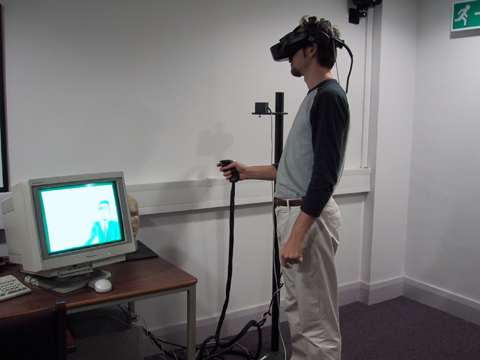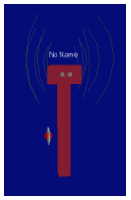




|
"VIRTUAL-HUMANS" AT UCL |
|
The most long-standing virtual humans have been built as accompaniments to computer games. The similarities between these humanoids and the ones built to inhabit virtual worlds end skin deep. In the case, of computer games, the virtual humans need only convey a few traits and have little functionality. However, today's virtual beings have to be able to communicate with users in a convincing fashion. The problem is that human communication remains an immensely complicated function to model computationally.
This complexity stares us in the face every morning, yet it is invisible." -- Phil Agre, 1985 RESEARCH FACT FILE ON UCL: The Virtual Environments and Computer Graphics group at University College London (UCL) have been undertaking engrossing research in the design of virtual humanoids, in conjunction with our psychology departments and other universities around the globe. Most of the research at UCL focuses on making our virtual collaborators more realistic and believable. Virtual humans at UCL can be used as an interface to represent us while visiting virtual environments (VEs) or they can be built as a self-sufficient sentient to co-inhabit with users in VEs. This involves not only designing and building physically believable virtual humanoids but also embodying them with behaviour traits to enable them to interact with other users in the virtual environments.
Some works hypothesise that behaviour realism is more important to aid believability. However, recent works at UCL into eye-gaze behaviour in avatars suggest that there is a correlation between physical and behavioural realism. In fact it was found that embodying a photo-simplistic with complex inferred behaviour was detrimental to the levels of believability and face-to-face effectiveness experienced in the shared virtual environment. Users of VEs expect a behaviour model consistent the physical appearance of the virtual human in order to believe that the virtual human is real and suspend their sense of disbelief. AGENTS EMPLOYED AT UCL: Existing virtual humans at UCL vary in physical appearance. They have been built over recent years to be incorporated into various projects and are available for use in future projects.
Research into "better looking" virtual humans is ongoing. With the current rate of advancements in the rendering of virtual objects, better avatars and agents are constantly emerging. Needs of a virtual humanoid other than good looks include:
| |||||||||||||||||||||||||||








